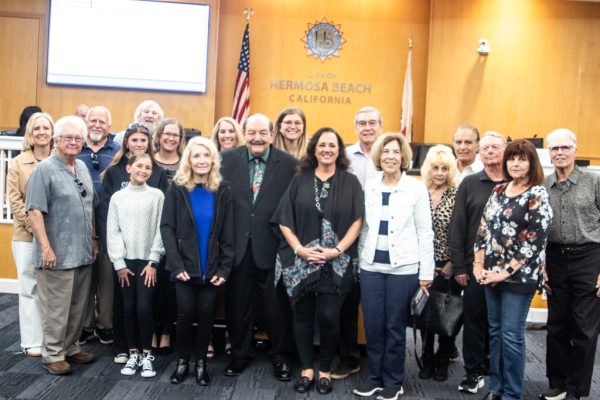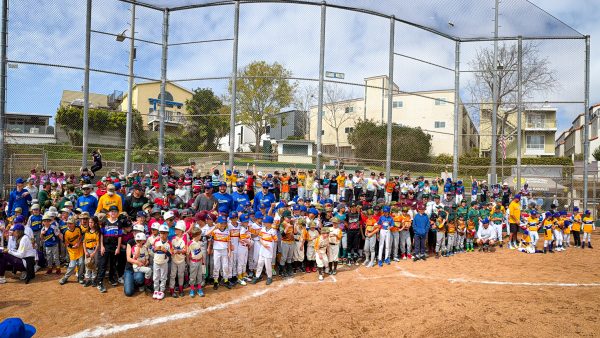
The concept has been developed by local innovator Billy Lafay and has the backing of Body Glove co-founder Bob Meistrell and SEA Lab director Brent Scheiwe.
“It would be an expansion and extension of what we are already doing,” Scheiwe said. “We would be building upon a base, getting bigger and better. It’s an opportunity to get out to the community, educate people, and give people an experience they can’t get anywhere else.”
A similar facility, called “Baja Reef,” formerly existed as part of the Marineland of the Pacific public aquarium in Palos Verdes.
“The Baja Reef was a popular saltwater pool where families could rent wetsuits, fins, and masks, and swim with the fish, observe ocean plants and other sea animals,” Lafay said. “It was entertaining and educational for all who swam at the reef.”
Meistrell credits Marineland with helping advance environmental awareness by familiarizing people with animals they would otherwise never encounter.
“In the old days, fishermen would actually shoot killer whales,” Meistrell said. “Now they are protected, and dolphins and fish – Marineland saved thousands of animals, because it raised awareness of them. People got to see them up close and said, ‘Those are nice animals.’”
The facility could also serve as a hatchery of a sort for species, such as the black sea bass, that have suffered a deep decline in numbers in local waters. Scheiwe envisions several kinds of local fish, as well as sharks and crabs. Meistrell stressed the importance of the interactive experience a living lagoon would offer.
“Octopuses, sand sharks, bat rays – it would be a fantastic thing for kids to see these animals underwater,” Meistrell said. “They can see them and play with them, but being in the water with them – that is the big thing. That is where you get the excitement. It encourages kids to take an interest in marine biology and marine science and things like that.”
Lafay argues that regardless of the political outcome of the city’s current struggles to keep the Seaside Lagoon open (see story on page 14), the “living lagoon” idea makes both educational and economic sense.
“Basically, that venue is used three months out of the year,” Lafay said. “The rest of the year it sits vacant. I ride my bike by it every day, and mostly it’s empty. This would make it a year-round venue. We’d have a heated ‘plunge’ and the water quality issues would be gone. We’d still have the venue for the lobster festival and everything else – it’s just a creative way of taking a valuable piece of property and making it so the community can use it all year long.”
City officials are somewhat skeptical. Councilman Pat Aust said he liked the idea but saw many practical difficulties in making it happen – starting with making such a facility comply with the L.A. County Health Department, which requires the city to chlorinate the lagoon. And then there is the matter of ocean water outflow, which is under the regulatory authority of the Los Angeles Regional Water Quality Control Board. Aust said making such a facility comply with the LARWQCB would likely require a filtration system that would cost millions.
“Sea World and other places have giant, multi-million dollar filtration systems, which we have none,” Aust said. “Ours is chemical – chlorinate it, take the chlorine out, not really filtration. So it’s a pleasant idea but here is where science would have to catch up with economy.”
Aust said that Marineland’s Baja Reef had some key differences – it didn’t serve 100,000 people, as the lagoon does, and it predated much extensive regulatory overlay.
“It’s a nice idea but it’d take a lot of money,” Aust said of the living lagoon. “That is the problem – all good things cost a lot of money.”
City Manager Bill Workman said the city is always open to proposals but stressed the importance of also having an accompanying business plan.
“A variety of folks have interesting ideas and so forth, but when we say, ‘Do you have a business plan to go along with it?’ that generally puts cold water on some of those ideas,” Workman said. “When you start talking, it’s yes, the city pays for everything, and they get to operate something.”
Lafay said this idea would not cost the city and certainly would not subject it to the fines in the hundreds of thousands of dollars it has already paid attempting to operate the lagoon.
“It wouldn’t cost the city a dime, anyway, or maybe a little bit if they chose to make a cement plunge like the Torrance plunge and get rid of the water quality issues that cost it $280,000 in fines paid to the water quality board,” Lafay said. “If the city is interested, trust me, we can come up with a plan for the lagoon. It’s not a business – Body Glove and myself are not trying to make money. It’s something to pay back to the community and expand the SEA Lab.”
“It’s a nice idea, but it probably isn’t going to happen,” Lafay added. “Because there is too much common sense about it.” ER










